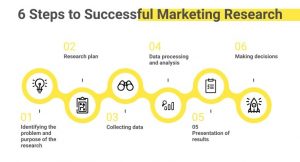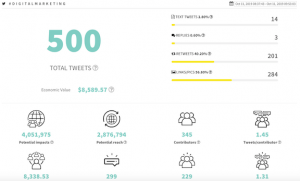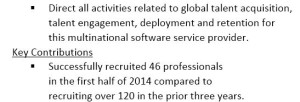Business leaders will often see their strategies fail, regardless of how much thought they put into it. Not every effort pays off, and not every investment is worthwhile.
It’s easy to believe that the worst thing that could happen in these cases is to waste money. Yet, that would be wrong.
There’s probably nothing worse than not understanding where you made a mistake because that prevents you from correcting it. It also makes it more likely you’ll do it again.
But how do you spot faults before they even occur? – By tracking and analyzing processes and monitoring actions as you take them. That way, you can measure their success potential.
It’s what makes key performance indicators (KPIs) crucial for identifying the efficiency of your recruitment.
Organizations and HR professionals use KPIs to measure the effectiveness of their strategies, optimize the recruitment process, and enhance their performance. Hence, they’re a strategic tool that helps adjust short-term and long-term objectives.
KPIs are metrics that allow recruitment agencies, hiring managers, and recruiters to understand how successful their actions are in helping them achieve their goals.
If you don’t measure your KPIs, you risk losing productivity, slow processes, and mediocre results. However, the effectiveness of KPIs increases with the use of technology. However, the effectiveness of KPIs increases with the use of technology.
In combination, they lead to more successful and faster recruitment.
An in-depth look at the Key Performance Indicators
In a nutshell, KPIs show how many steps keep you away from your goals. These metrics are data-driven and rely on scientific facts to determine where you stand in the recruitment process.
They provide invaluable insights that guide your actions and provide a safe path towards your hiring objectives. For example, KPIs can show you what channels continuously lead you to the most compatible candidates.
Moreover, they offer data that helps you reach the target audience or shorten the time needed to hire an employee. If you wonder how efficient your interview structure is, implement the right KPIs to track candidate satisfaction.
On the other hand, you can also leverage your past benchmarking reports for comparisons and determine hiring success. You can adjust KPIs to your business needs, measure critical points, and address the pain points.
According to Wayne W. Eckerson, good KPIs are sparse, simple, drillable, owned, actionable, correlated, and aligned. That means that when setting them, you should go into detail, address the critical aspects, make them easy to communicate, and ensure you can affect their outcome.
Thus, each KPI should have an owner who gets a reward after hitting the target. Finally, relate them to your desired goal and make sure that one KPI doesn’t undermine another.
The Thin Line Between Recruitment Metrics and KPIs
KPIs and metrics are often used interchangeably by even the most seasoned HR professionals. Even if the difference is minor, it still exists.
All key performance indicators are metrics, and they’re in a tight-knit connection with the business objectives. KPI shows you if your efforts help you maximize your potential, which is crucial for your company.
On the other hand, recruitment metrics represent data points that allow tracking and measuring hiring success. They have a predominantly quantitative character.
Because of that, every key performance indicator is also a metric, but not every recruitment metric is a KPI. Nevertheless, both help you improve decision-making, team performance, and business success.
The Consequences of Not Tracking KPIs
Despite their critical role in reaching desirable recruitment outcomes, not every company uses KPIs or finds them significant. HR leaders often fail to comprehend how these indicators could benefit them or how not using them could affect recruitment.
Hence, it’s essential to disclose the potential consequences of not including KPIs in the hiring process. Here’s what happens when you overlook the importance of key performance indicators:
1. Lack of Control
Performance indicators resemble a roadmap that highlights red flags and potential dangers. These strategic tools help recruiters avoid second-guessing and navigating the hiring process in the dark.
As a result, they can spot threats before encountering them, allowing them to find solutions timely and have complete control over recruitment.
2. Failure to Predict Strategy Effectiveness
You won’t know if your actions are ineffective unless you measure their efficacy. KPIs provide you a complete picture of the process and reveal what is and isn’t working.
These indicators are a data-driven tool that informs you if your hiring efforts are making a difference. For example, you could invest time and energy in candidate sourcing on channels that don’t align with your target audience, resulting in a lack of qualified job applicants.
3. Mediocre Results
Using KPIs in your recruitment means that you’re using your full potential. It’s critical to use all available tools to improve your strategies, or you’ll settle for mediocre results.
Although your company might be performing well now, there are no guarantees it will continue that way. If you want to continue accomplishing stellar results, you must forecast potential changes and adjust your efforts.
4. Inability to Define Success
A lack of performance tracking makes it nearly impossible to define what success means for your company. Thus, every team member could have their own interpretation of excellence.
Defining success and adopting KPIs to measure it ensures everyone is working towards the same goal.
5. The Inability to Foresee Possible Issues
KPIs help you spot flaws in your recruitment process and point to inefficient actions. That way, you can detect issues before they exacerbate, and you can’t control them any longer.
6. Lack of Prioritization
Besides helping you identify potential problems, KPIs also allow you to understand what aspects of the recruitment process require additional attention. As a result, you can prioritize and decide where to invest more time, energy, and money.
7. Trivial Use of Data
Measuring performance enables recruiters to track the most relevant aspects and get accurate information. Otherwise, their use of data could be trivial and prone to misinterpretations.
8. Making Decisions without supported data
Recruitment requires self-efficacy and scientific facts. Otherwise, partial data, anecdotal evidence, and hearsay will dictate recruiters’ decision-making.
How to Leverage KPIs to Measure Recruitment Efficacy
When implementing or re-evaluating your key performance indicators, you must ensure your hiring efforts match the business strategy and goals. That will help you choose the best KPIs and use them to measure your effectiveness successfully.
Use the SMART criteria to establish specific, measurable, attainable, relevant, and timely KPIs. Consider all significant aspects that affect your business and hiring process, such as whether your actions align with the budget and whether you’re recruiting high-quality employees.
Moreover, think about the ROI, retention, and candidate satisfaction. Your industry, company size, and market position should also influence what KPIs you’ll choose.
For example, a small business might not need the same number of indicators as a large enterprise. Because of that, pay attention to details, or you risk measuring KPIs that don’t give enough valuable insights.
Of course, that’s prone to changes as your business could grow over time, requiring additional indicators that help you scale your recruitment. But there’s another thing you should keep in mind to make your KPIs more efficient.
Establish good foundations and not rely on hiring indicators to correct all the flaws in your strategies. Build a high-quality talent pool and be proactive concerning recruitment.
Attract top talents for roles and positions that are typically hard-to-fill or have a poor retention rate. Foster a positive employer branding and develop a happy workplace that nurtures connections with its current employees, alumni, and shortlisted candidates.
Assess what departments, roles, and positions require more attention and direct your energy in that direction. Finally, determine what aspects of the recruitment process need more resources than the others.
Thus, KPIs will serve as a summary of your efforts, assisting you in enhancing team performance, controlling hiring operations, and achieving desired goals.
The Questions to Ask Before Making a Decision on KPIs
Although KPIs are a great way to improve recruitment efficiency, not every business should track every KPI. As you evaluate your market position, business size, and industry, consider the following questions:
- How often did the job openings in your company close by, finding the right candidate?
- How long does it take your recruitment staff to find qualified candidates for a job?
- What percentage of high-quality job applications make it to the interview stage?
- How much time do specific recruitment managers in your team take to hire the most qualified candidate?
- Are salaries in your company in a similar rank with your principal competitors?
- On a scale of 1 – 10 how do new hires rate their candidate experience?
- How many qualified candidates were found through employee referrals?
Top 12 Recruitment KPIs for 2022
Here are the top 12 recruitment KPIs you should be measuring in 2022 and beyond.
1. Time-to-interview – This metric covers the time that passed between the moment you announced an available vacancy until the moment you first met the candidate. It gives you valuable insights into how fast your application process is and specific recruiter efficiency.
Hence, you can use it to anticipate candidate experience satisfaction. For example, 69 percent of candidates want to see employer responses concerning interviews improved.
2. Time-to-hire – This KPI shows how long it took you to hire the best candidate after you posted the job. If too long, that indicates your hiring process fails to be efficient.
Moreover, you might be giving too much attention to an insignificant step and should move your focus. Evaluate your job descriptions for clarity and attractiveness, and your application procedure for complexity.
3. Candidate sourcing channels efficacy – You should know whether your team invests resources and time in the best sourcing channels. Otherwise, your actions will lead to a shortage of talent or receive applications of job seekers who are under-qualified.
This indicator helps you track individual campaign effectiveness, how many persons viewed your job ad, and how many clicked on it. If you notice a significant difference between the number of clicks and received job applications, you’re not reaching the target audience.
4. Cost-per-hire – The goal of this KPI is to give you insights into the average cost of filling an available vacancy. It also tells you whether your in-house hiring department is performing well.
If you have low costs, your efforts are paying off, resulting in an efficient process.
5. Rejection rate – This KPI lets you know how many candidates you weed out right after assessing their job application. It indicates how many qualified talents applied for your job opening.
If the rejection rate is high, you should consider tweaking your job ads or sourcing channels.
6. Quality-of-hire – Measuring new employee performance gives you insight into the quality of hire. Quality-of-hire represents the alignment between your recruitment efforts and business goals, most efficient sourcing channels, and recruiter efficiency.
7. Early turnover – This KPI tells you how many workers quit soon after being hired, which can cost up to one trillion USD. If this rate is high, you should re-evaluate your onboarding practices and ensure employees receive a well-rounded team integration.
8. Unfilled vacancy cost – This metric is associated with a cost per vacancy, and it tells you how much an unfilled job opening costs your company. If you lose a lot of money to vacant positions, you must reassess your recruitment process.
9. Offer rate – This KPI gives you insights into the balance between the open vacancies and the number of qualified candidates who received a job offer.
10. Offer-acceptance rate – On the other hand, this one tells you how many talents accepted your job offer.
11. Hiring manager satisfaction – This KPI gives you insights into how satisfied are hiring managers with the flow and efficiency of their recruitment processes.
12. Candidate satisfaction – As one of the most critical metrics, this KPI tells you whether job applicants found the hiring process satisfactory. Although 38 percent of individuals are more likely to accept a job offer after a great candidate experience, only 25 percent had a good one.
How to Measure KPI Effectiveness
It’s essential to have an accurate and seamless method of measuring KPI effectiveness. Because of that, the best solution is to leverage technology and data-driven algorithms.
For example, recruitment SaaS provides an easy-to-navigate dashboard, and it shows real-time insights. That way, you can keep all the data in one place and track it continuously, ensuring that you’re adjusting your actions timely.
However, it’s also a must to have clear goals and know what you want to achieve. You might want to identify the channels that help you attract qualified candidates for executive roles, or you want to shorten the time it takes you to hire people.
Knowing your objectives allows you to track their progress in the dashboard, visualize indicators, and evaluate team performance. On the other hand, you should also know how you’ll measure the success of your recruiters and their responsibility for specific KPIs.
For example, recruitment agencies should focus more on reaching recruitment goals, how many individuals completed job applications, and the number of qualified applicants. However, recruitment managers typically have to prove the ROI of their hiring efforts.
Because of that, they should consider measuring the cost to hire, time to hire, and sourcing channel effectiveness. Recruitment consultants usually focus on enhancing performance in specific hiring phases, placing candidate experience, recruiter satisfaction, and offer-acceptance rate.
How to Use Recruitment SaaS to Drive the Efficiency of KPIs
Recruitment SaaS dashboards are great for tracking and measuring KPIs, but you can also leverage this cloud-based software to drive the efficiency of these metrics. Here’s how you can combine the SaaS efforts and key performance metrics to improve your recruitment process:
- ATS – This recruitment tool gives you easy access to all your candidates in one place, allowing you to track their progress, how fast they move through the funnel, and assess their profile information. That way, you can weed out inactive and under-qualified job applicants before they reach later stages of the process.
- Recommendations – Thanks to this data-driven mechanism, you can get quick insights into the most compatible candidates in your talent pool. Recommendations tool scans job requirements and candidate profiles, detecting the best match for each position.
Thus, that enables you to speed up the process and increase efficiency, using fewer resources and energy.
- Team Collaboration – This tool is helpful because it enables internal and external communication. As a result, the hiring manager and all involved parties can work together without interruptions to shortlist job applicants and manage their candidate experience.
That’s also good for ensuring everyone is on the same page and going in the right direction to achieve recruitment objectives.
- Reports and Analytics – KPIs benefit from this tool because it collects and analyses relevant data, helping you understand the effect of your efforts and what’s resulting in desirable results. Moreover, you can assess and benchmark various sourcing and job application channels and use KPIs to reach the best outcomes.
Conclusion
Recruitment KPIs can help you direct your hiring process towards your goals, increase efficiency, and eliminate activities that make no difference. However, it’s recommended to leverage them in combination with AI-powered technology, such as recruitment SaaS.
You’ll get access to a centralized dashboard that enables data visualization and includes recruitment tools that boost the power of KPIs. It’s a shortcut to identifying if your efforts help you reach your goals and improve the overall recruitment process.
Business & Finance Articles on Business 2 Community(95)
Report Post






